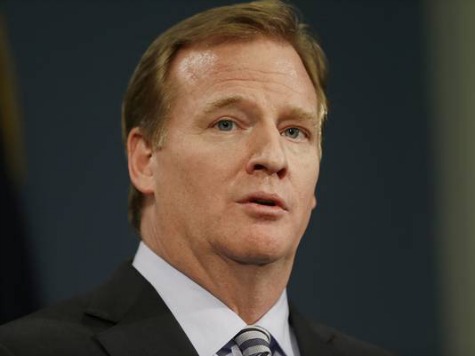Does Roger Goodell forget that the organization he leads calls itself the National Football League?
“The extra point is almost automatic,” Goodell observed on the NFL Network in floating the idea of eliminating extra-point kicks. “I believe we had five missed extra points this year out of 1,200 some odd [tries]. So it’s a very small fraction of the play, and you want to add excitement with every play.” The solution rule tinkerers have bandied about involves awarding seven points for touchdowns, with an extra point added or subtracted based on the success or failure of a play from scrimmage.
The point-after touchdown remains a pesky, anachronistic reminder that football involves kicking a ball, or at least it once did. Gridiron gurus periodically white-out vestiges of that old-school kicking game from the rule book. The NCAA long ago eliminated the fair-catch free kick–the unobstructed field goal attempt allowed after a fair catch–that persists in obscurity at other levels (the San Francisco ’49ers tried one this season). The NFL has largely negated kickoffs by moving them up to the 35-yard line and thereby greatly increased touchbacks. It’s enough to make some fans forget that the kicking game is an important part of the game.
Or at least it used to be. Jim Thorpe once caught his own punt midair and, as the rules then permitted such dramatics, returned it for a touchdown. George Gipp, before a passing-game induced diet dropped the bloated ball several waist sizes, kicked a 69-yard field goal in a Notre Dame freshman game. Hall of Fame quarterback Sammy Baugh led the NFL in punting, an activity that Hall of Fame linebacker Chuck Bednarik relished partaking in when duty called. Being a complete football player, as the NFL’s atavistic pass-punt-kick competitions for kids convey, used to involve the ability to kick as well as pass, catch, tackle, and block.
It’s not just that kicking occupied a less peripheral place on the gridiron stage in the 19th century. It played the starring role. In 1876, in a game played in by Yale freshman Walter Camp, the sport’s chief evangelist, and watched by Harvard freshman Theodore Roosevelt, one of its chief saviors, the Bulldogs triumphed one field goal to the Crimson’s two touchdowns. Once upon a time, Morten Anderson mattered more than Jim Brown.
That seemingly unjust outcome favoring field goals–almost always made as drop kicks–to touchdowns surely didn’t persuade the fledgling running back/rulemaker to champion altering the balance between the ground game and the kicking game. But Camp and company more precisely defined scoring that season: “A match shall be decided by a majority of touchdowns; a goal shall be equal to four touchdowns; but in case of a tie a goal kicked from a touchdown shall take precedence over four touchdowns.” Comprende?
The following season, when Camp unleashed touchdown runs of forty and seventy yards against Princeton that failed to result in scores–the scoring opportunity came on the kick that the touchdowns enabled the offensive team to try–Camp rethought the privileged place of kicking.Tellingly, six years later when football first awarded point designations to its various scoring plays, field goals (5) and points-after touchdowns (4) exceeded points from touchdowns (2). Touchdowns still counted for more than the newly invented safety (1). But football, as its name implied, remained a kicking sport.
Slowly, the ground game overtook the kicking game–just as the yet-to-be-invented aerial attack would slowly overtake the running attack. In 1884, points from the touchdown (4) eclipsed those from the conversion (2). By 1897, rules awarded five points for a touchdown. As the stock of the touchdown soared, that of the field goal sank–going from five points in 1883 to four points in 1904 to three points in 1909. By 1912, football codified scoring into a system resembling what we have today with six points for a touchdown, three points for a field goal, two points for a safety, and one point for the conversion.
Kickers have ultimately become a victim of their own success. In 1991, when Scott Norwood missed wide right, a 47-yard field goal was an iffy proposition. Nearly a quarter century later, football fans bank on kicks from such distances. So taken for granted is the kicking position that when Denver’s Matt Prater broke a forty-three-year-old record this season in making a 64-yard (elevation aided) field goal fans barely noticed.
The present laughs at the notion of a football game in which centers could kick the ball to the defense rather than just snap the ball to the quarterback, field goals counted for more points than touchdowns, and players scored by kicking balls beneath rather than above the crossbar. Is this astonishment as justified as the past’s disbelief at our notion of football without kicking?
Daniel J. Flynn, the author of The War on Football: Saving America’s Game, edits Breitbart Sports.

COMMENTS
Please let us know if you're having issues with commenting.